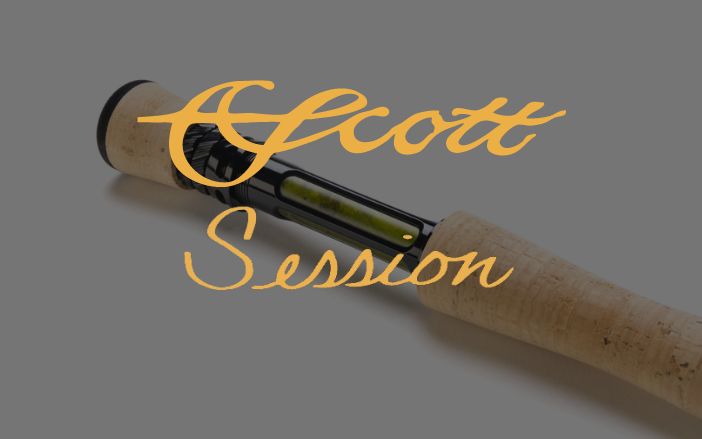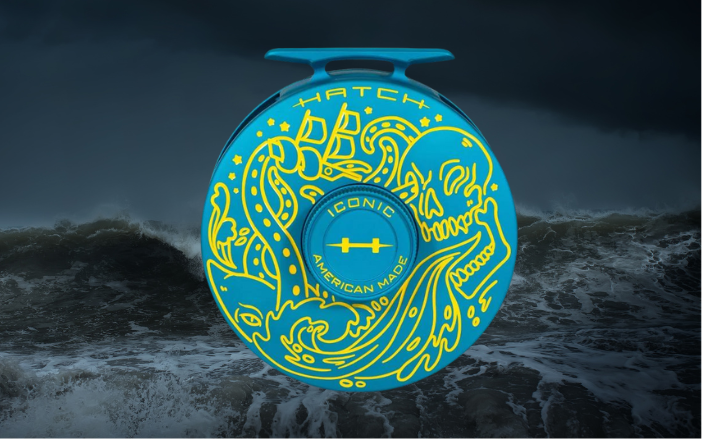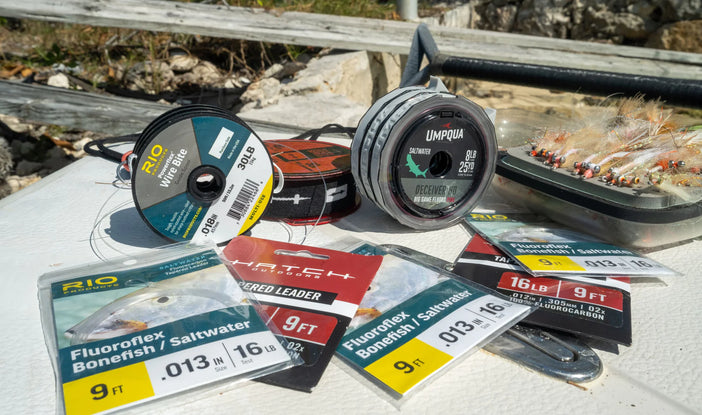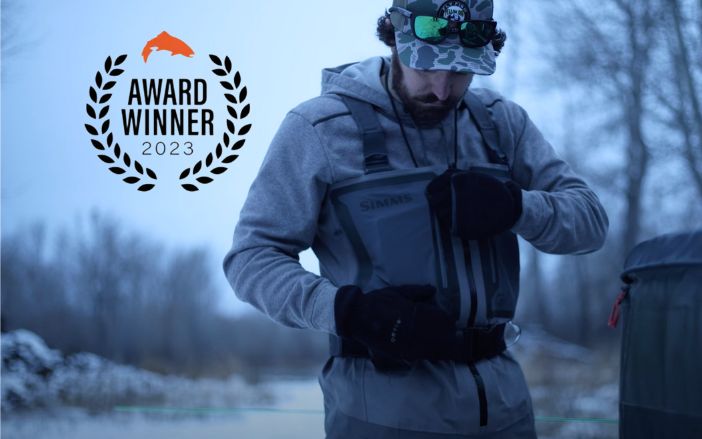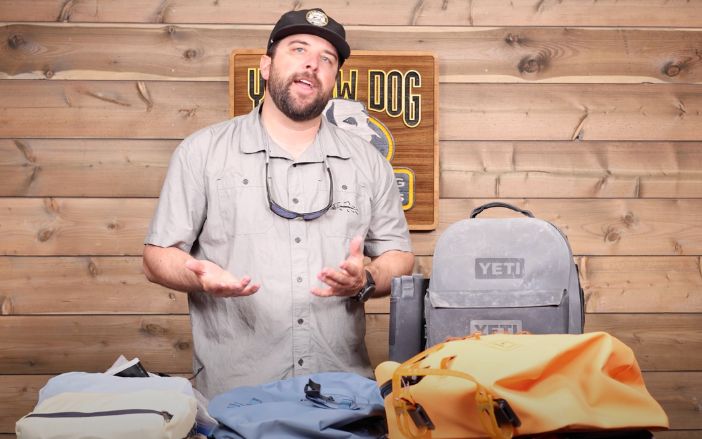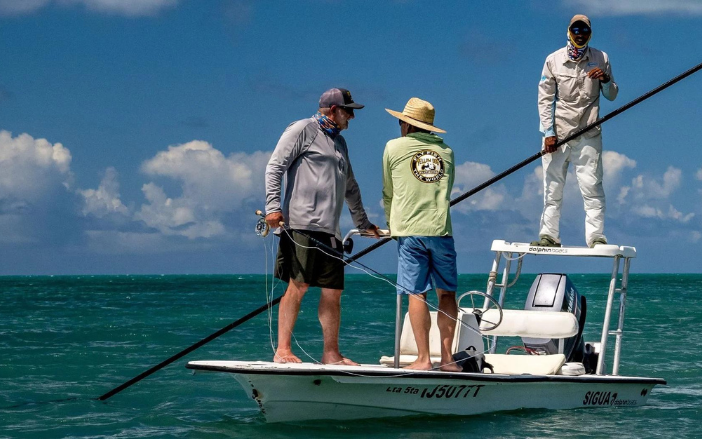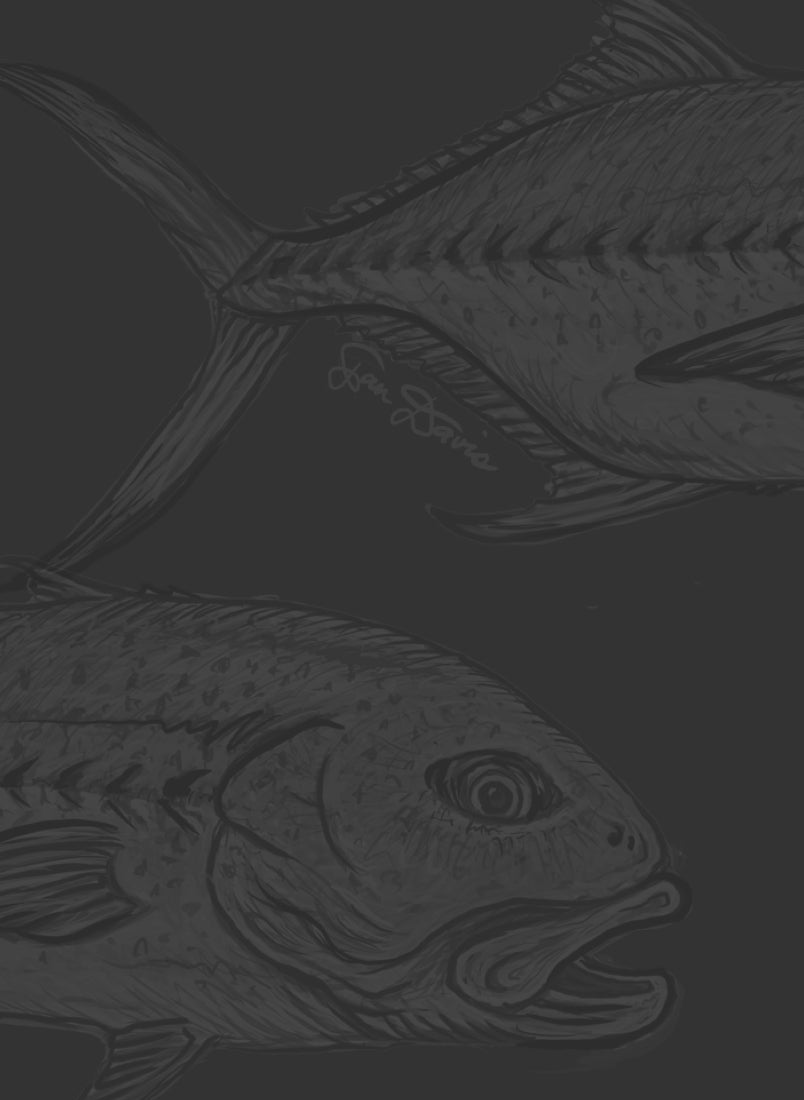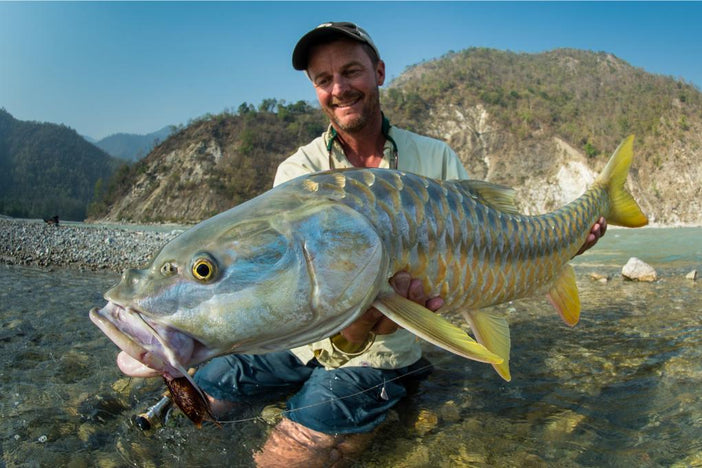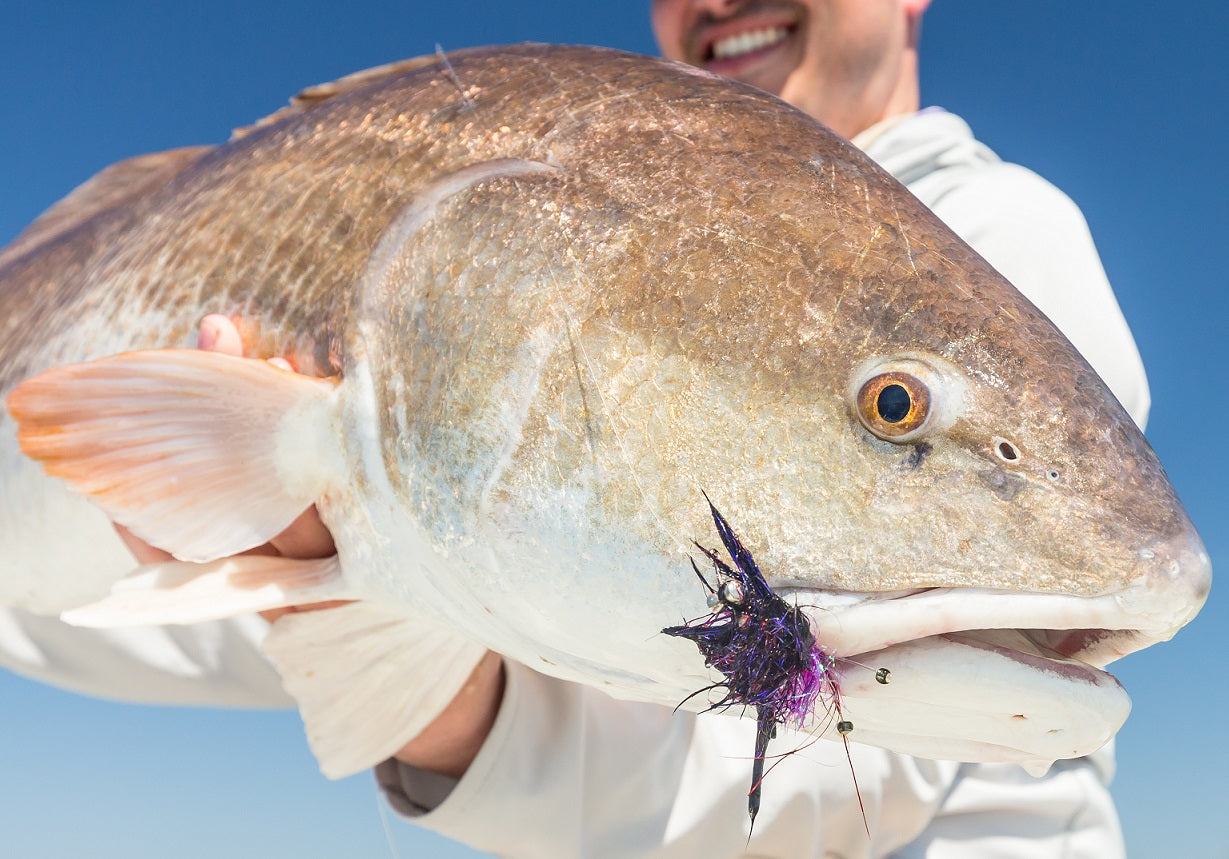Head down south to the Louisiana fishing playgrounds in and around New Orleans and the Biloxi Marsh area, an estuary network of 210,000 acres of coastal wetlands located on the eastern side of Louisiana, which borders the Gulf of Mexico, you will find yourself in the mecca of redfish fly fishing. This area is chalked full of bayous and canals, dotted with innumerable lakes, bays, ponds, and lagoons, which provide a rich variety of habitat that offers some of the best coastal fishing anywhere on earth.
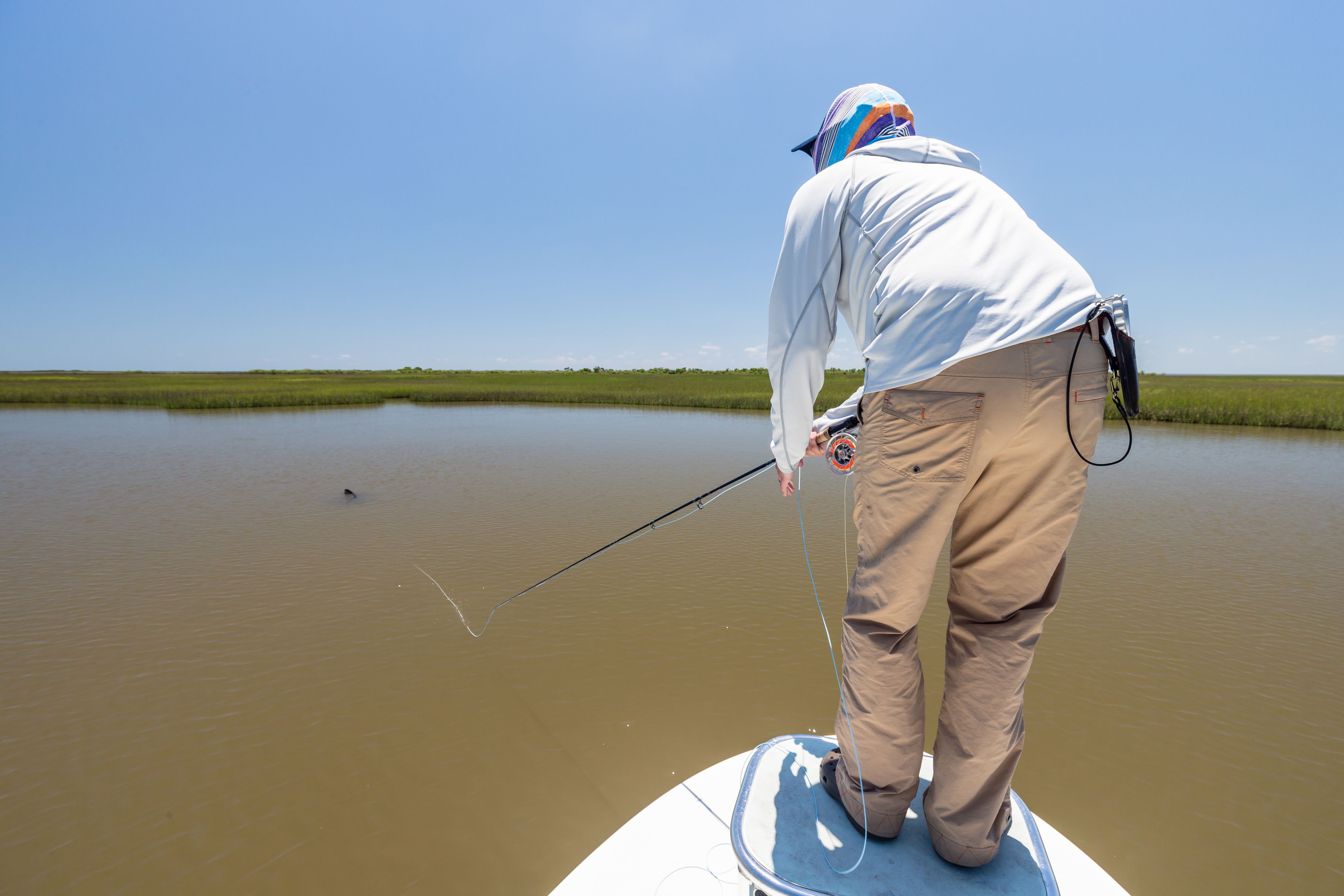
Redfish are a great species for the beginning saltwater angler to gain their saltwater chops. We say they are friendly species to newer salt fishermen because, quite bluntly, they honor solid fly presentations, and they are accessible here in the U.S. While other species like tarpon or permit require more of a hardened seasoned skillset to fish for, redfish oftentimes are caught in situations where an angler will only need to make a cast under 30 feet and many times within 10 feet.
Still, if you find yourself out on a skiff targeting redfish in close proximity, you need to be ready for them.
We’ve put together a list of fly fishing for redfish tips to help any angler, seasoned or green, best curtail their approach to landing a redfish on the fly.
1) Not Just for Fall Fishing.
There is a misconception about when to go fish for redfish. Contrary to popular belief, it’s not just in the fall months or early winter when you can fish for them. Any angler can target redfish year-round, but there are other things to consider. If you're fishing the "Redfish Capital of the World," aka "Louisiana," you’ll be fishing in swamp and marsh. As expected, the months of June, July, and August are historically really hot months down there but don't overlook the summertime fishing season. September through May is typically game on for ideal fishing times due to seeing big Gulf bull redfish that come through and the water tends to be the cleanest and the clarity is best.
At that time of the year, the marsh system has filtered enough of the water so that it makes for most optimal sight fishing conditions, but like all situations left to chance, that’s not to say a big storm couldn’t move through and could muddy up the water. Typically, the later into the calendar year you wait like into December, January, or February, the weather can be unpredictable.
But again, you can find redfish anytime as many fish will hold over in the area throughout the year. Ultimately the weather is an unpredictable factor. A classic testament is to forget about the forecast because there is always the chance to have those calm, bluebird low-wind days even during hectic weather months like March. It’s still worth it to make the trip because you just never know what will happen.

2) More Opportunities to Connect.
Redfish can be a forgiving saltwater fish for new anglers to go after. This really depends on where you fish. If you're targeting redfish on the fly in Mosquito Lagoon in Florida, you may have more of a challenge hooking into one versus a destination like Louisiana. It just takes a different approach, depending on where you are. Saltwater fishing, whether it’s tarpon, permit, or redfish, are all very similar in their general approaches, but the redfish difference is that you generally don’t need to be as gentle with your presentation.
In destinations like Louisiana, they might miss the fly once, but chances are they will come around for another strike again and again. In some parts of Lousiana, it's not unusual to hook a redfish, have it come off your fly, then turn around and eat it again. These big bull redfish are used to eating large blue crabs that pinch the snot out of them - if you get the privilege to fish in Louisiana, look at the mouths of some of the fish you catch. Some will look like they've been in a bar fight!
Usually, you can drop it on their nose, and they won’t spook. More than likely, if you put your fly to any side of a redfish and give it some action, they will attack it and want to put that fly in their mouth.

3) For Redfish, it’s All About the Eat.
What makes redfish so much fun to catch is that they are a fight similar to having a carp on the fly. They aren’t typically going to run you 100ft into your backing like bonefish, nor are they going to do aerials like tarpon, but instead, they are going to bulldog you and can be a fun, heavy load to fight on a fly rod. Have no doubts that they will bend your rod and make for an exciting battle.
Properly fight a redfish by pointing your rod at your target and using the butt of the fly rod to lift and pull. The tip and midsection of your fly rod were designed to enable the rod to be cast properly. The butt section of the fly rod doesn't necessarily aid an angler in casting but has everything to do with fighting a fish. Apply side pressure to the opposite side of which the fish is swimming to break its spirit quickly! Watch this video from Andy Mill on how to fight fish on a fly rod.
The thrill is all in anticipation of the eat. There isn’t a fishing experience quite like looking for light copper bodies moving through the water, getting off a good cast to those shadows, and then seeing that big white mouth open up to take your fly.
4) Practice Makes Perfect.
Before you go on your trip, practicing your casting is a good idea. If you aren’t used to casting 8, 9, or 10-weight fly rods, it will be incredibly helpful to know how to use your equipment when it counts. Spending your time, money, and resources to fish for this exciting species behooves any angler to maximize their chances of success by practicing before they go.
Remember, the maximum distance you’ll likely be casting is 30-40 ft. It’s a good idea to practice the shorter cast, like 15-20 ft range, because your casts need to be short and quick. You’d be surprised, but many people aren’t used to making those shorter casts, but there are a few workarounds to help you out.
There are ways to make loading your rod easier for those shorter casts, like using lines that are more heavily tapered on the front end to help turn over your flies at shorter distances, or you can overline your rod by using a 10-weight line on a 9 weight rod which could help. Fast action rods are also good to use, especially if the wind picks up.
Using a reel with a really good drag will benefit you too. For your lines, there are many good redfish-specific tapered fly lines by Rio or Scientific Anglers that are worth checking out.

5) How to Spot Redfish Before They Spot You
It's hard to forget the first time you see a redfish swimming in the water. Many who pursue them have been described as floating pumpkins due to their copper-orange color. In dirty water or when the wind is up, a helpful tip is to not look for the entire fish. Instead, pretend that you're looking for two Pringles floating underwater. It sounds silly, but the pectoral fins on a redfish are slightly curved and slanted up. When light hits them just right, they glow and look just like Pringles chips.
Look at the picture of the redfish below. A redfish has a rounded nose and will push water. Generally, when scouting for fish, baitfish will make a "V" shape on the surface of the water, whereas redfish will push an "I" or "U" shape. It's very similar to when you're in a pool and brush your arm horizontally just under the water like you're trying to make a big wave. A wall of water forms, which looks exactly like a school of traveling redfish. Nonetheless, go ahead and make a cast at whatever you think is fishy, as casts are free!
Next, pay attention to what else is happening around you. Where are the birds? And why is that section of water muddier than the other section right next to it? In some cases, you can spot redfish from far distances just by noticing what the marsh is doing. Every so often, look up and scan the water's surface. Sometimes, you can find redfish tailing, or you may see a muddy section of water where they have just been feeding.

6) Simple Mistakes Everyone Makes: Follow These Rules!
There are a few things that we simply forget about, especially when it is super cold or hot out, that will deter us from hooking into redfish:
a) When you shuffle your feet on the bow of the skiff to make a cast, that could spook the fish. Plant your feet and make the cast
b) Don't slam the hatches
c) Check your leader and tippet from time to time to make sure it isn't frayed from oysters
e) If you do spook a redfish, put the fly right back in there and strip! They may turn around and eat
7) Listen to Your Guide.
Applicable to any place you would fish with a guide before you even step into the boat, it’s a good idea to tell your guide how you received instruction best. Fishing is a team effort. Whether it’s letting them know that you appreciate them using the clock system for where to make your casts, like saying cast at 11 o’clock and 30 ft or 9 o’clock at 20 ft.
Good communication between you and your guide is key.
Let’s face it. Guides aren't minded readers. You can waste half of your day without good communication because you two are not on the same page. Think of it more like a team effort, and the sooner you can figure out your communication to get onto a fish, the more success you will likely have. Setting that foundation early on, you will find that your day will be much more successful.
8) Be Ready
When fishing for redfish, you need to be on your toes to make those quick shots at a moving fish. Yes, you will have those times where you see the fish tailing with their noses down as they dig for crabs and shrimp, and they aren’t paying attention to things going on above them.
This situation allows you to sometimes get right on top of them, which allows you to take your time for a solid presentation.

Typically you won’t be fishing water that is deeper than one to three feet deep. Having some variety in your fly colors will be helpful. With most flies used for redfish, the design is kept simple. Click here to view our favorite redfish fly patterns.
The body of the fly will have some sort of mass to it. And don’t forget about weed guards for your flies. They can always be cut off if not needed. With stripping for redfish, you want to get that fish’s attention by stripping to take that fly away from their reach, then pause, and then strip again. You are essentially teasing them and triggering their predatory instinct to strike at the passing fly. Many times they will follow that fly all the way up to the boat before they bite it.
Besides the action of your fly in the water, the color of your fly might be a big determinant for your success. Different weather conditions, be that a light day or a dark day translates to a light fly or a dark fly pattern used. Blacks and purples are popular down there, and even orange colors. Topwater is a popular method to land a redfish, and using crease flies and gurglers works well.
Lastly, don’t forget to strip set your fly.

Overall, you’ll find that redfish live in beautiful ecosystems. There are redfish available, but depending on where you travel, you may have the opportunity to get into a black drum, sheepshead, gar, and jacks, which are a lot of fun to catch. But with the addition of the Cajun food and culture famously found throughout the New Orleans area, it can all make for a special cultural experience to accompany your saltwater fishing trip to Louisiana.
Get Ready For Your Next Redfish Trip
+ Shop Our Redfish Fly Assortment
+ Shop Our Redfish Equipment List
Related Articles
When you're ready: Five reasons to book a fly fishing trip to Louisiana
Top saltwater destinations for the traveling father in your life
Recommended Redfish Fly Fishing Experiences:






